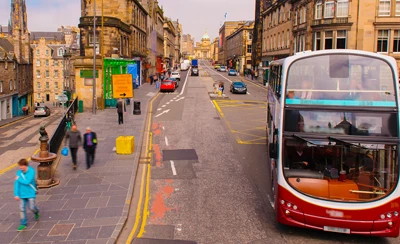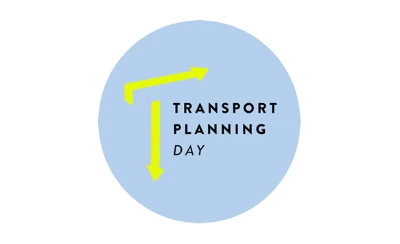James Llewellyn on transport in rural New Zealand
I didn’t know what the word “rural” really meant until I moved to New Zealand. Outside of the main urban areas, the land area consists of very small townships, and isolated communities who sometimes only have unsealed roads as their link to the outside world. Travel to the nearest basic services – a local shop, doctor, or post office – can be measured in the tens of kilometres; for a city-based hospital that can be multiplied into the hundreds. Apparently manageable “as the crow flies distances” do not take into account inaccessible mountain ranges, native bush or rivers.
In such circumstances, conventional wisdom has it that a car is essential to get about, and sure enough conventional public transport is often conspicuous by its absence. Which may be fine for people who are able to drive, and want to do so. People with disabilities and serious health conditions, however, often simply cannot make that choice. New Zealand roads are not fast and their safety record for private vehicles (not to mention pedestrians and cyclists) leaves much to be desired. Cars and fuel are not especially affordable, and a cost-of-living crisis is well and truly taking hold for many people. The New Zealand Government tacitly supports this situation by prioritising mode shift investment at the largest cities, pretty much leaving smaller urban and rural areas to fend for themselves. It is therefore little surprise that rural areas are generally some of the poorest in the country.
Then there is climate change. Driving long distances in private cars may not have the profile of vast queues of traffic on urban motorways, but it doesn’t help with reducing greenhouse gas emissions either. Even if there were sufficient charging points in rural areas, electric vehicles are currently way out of most people's price range.
Into this apparently hopeless situation step ordinary Kiwis, established charities and forward-thinking councils who are running and supporting “community transport” services for people who cannot, or choose not to, drive. Community transport is operated on a not-for-profit basis, usually by charitable trusts. Drivers are mainly volunteers, and any paid staff usually fulfil essential administrative and service coordination responsibilities. In this way, operating costs are a fraction of fixed routes and the trendy app-based services.
Community transport services – typically using vans or even cars - are usually offered “on-demand” through a phone-based booking system and a number of passengers share the ride to a common destination, generally the nearest town or city. Whilst many services start off based on medical appointments, demand quickly grows to cover all journey purposes. Larger charities such as St John are able to pay their staff and operate scheduled services based on fixed routes to hospitals, often covering vast distances every weekday. Collectively, community transport provides hundreds of thousands of person journeys that would otherwise not be possible. The economic, social, and environmental benefits can only be guessed at, but for many people with no choice of travel mode they are hugely significant.
I have been undertaking a number of community transport studies and projects for councils across New Zealand, and talking to existing operators is instructive. One told me that they started a service when they realised some people in a local care home had not left the building for years, and in effect were prisoners. Another said that their service in a small South Island town was going great, until the local commercial taxi operator objected to their presence. There are inevitably risks – one operator wasn’t told that a passenger had dementia and was dropped off at the hospital entrance, when he subsequently wandered off in the wrong direction. Luckily, no harm came to him, and the appropriate question is now asked in advance!
Through my work, I have been seriously impressed and inspired by the unsung heroes who spend their time raising money through pub quizzes and making funding applications to a plethora of philanthropic and lottery-based organisations across the country. Regional Councils such as Waikato and Canterbury already have policy and funding frameworks for community transport, including staff who coordinate services, provide practical advice, and dispense available cash (raised through rates) to support investment (in particular vehicle purchase and maintenance). Many other councils across New Zealand are now considering following their lead, and the future is looking bright for community transport.
However, community transport service provision is still dependent on sufficient numbers of volunteers – often with time on their hands and a reasonable pension – to provide the necessary capacity. The obvious risk is that poorer areas – with fewer of these people available to help – miss out on community transport provision which then becomes the proverbial post code lottery. Not all community transport services are geared up to transport disabled people, because equipment and training can be beyond the means of smaller operators in particular. There are many legal, health & safety and practical challenges to overcome – all done on a shoestring budget. Some small operators want to remain that way; which is fine. But others have ambitions to grow and do more; and that is what is needed across the country.
Top of a future wish list would be establishment of a national community transport representative body, which would advocate for greater funding and policy priority to the sector. Added to that would be recognition that community transport is an integral part of the public transport network, which would enable councils and even District Health Boards to let contracts for local services which could be operated by charitable trusts, rather than automatically going to commercial bus and taxi companies. In this way, more people working for community transport operators can get some recompense for their efforts. Furthermore, funding and capacity-building support, to enable purchase and operation of fully accessible and zero emission community transport vehicles, would address the twin issues of equity for disabled people and decarbonisation.
At a Waikato community transport symposium, one participant stated that it is not a great sign when a transport service is funded by raffles and tombolas. Whilst it would be a shame to completely lose this link to local fundraising, from a strategy perspective the point is very well made. Community transport has proven to be a professionally run essential transport service, that has operated under the radar for far too long. Now is the time to move to the next level, and prove that owning and running a car in a rural area isn’t always necessary.
James Llewellyn is Managing Director of Taith Consulting, a specialist public transport consultancy based in the North Island of New Zealand. Views expressed in this article are personal. James can be reached at james@taith.co.nz








